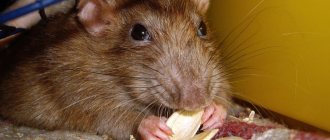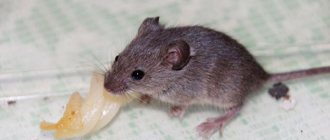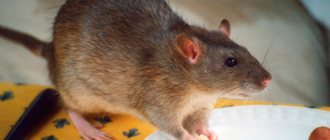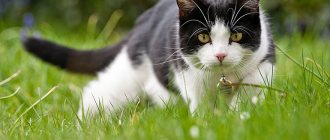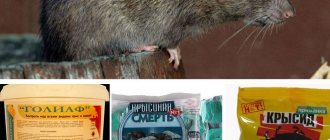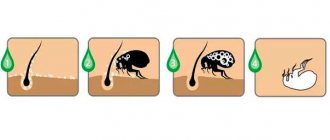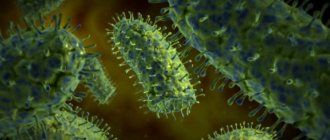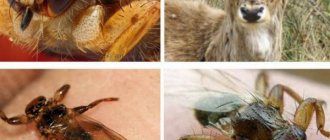If you have decided to choose a rat repellent yourself, then you may have already appreciated how difficult this task can be for an unprepared person. It is even more difficult if you are looking for a remedy that will be both effective, safe and relatively inexpensive.
There are many varieties of rat poisons available for sale, and it is easy to get confused. Moreover, you are offered to poison some unfortunate rodent, kill it with traps, frighten it with a repeller, or catch it on a piece of cardboard coated with special glue for rats and mice.
And at first glance, each of these options seems to be good in its own way, but it is not clear which one to prefer. It is all the more difficult to choose an effective remedy for rats based on the promises of sellers, because it is often difficult to understand where the truth ends and where advertising begins.
Well, then we will put all this chaos in order and choose from the currently available means used against rats and mice those that are best used at home...
Classification of funds
When choosing a method of getting rid of rodents, you need to take into account factors such as their numbers, the presence of pets, and where exactly they need to be destroyed.
Usually funds are divided into:
- Physical. These include rodent traps and traps.
- Chemical. These are various pesticides that can be produced in the form of powders, aerosols, liquid form, baits, etc.
- Biological. These include the use of natural enemies of rats and mice - cats, ferrets, and some breeds of dogs.
- Folk. This includes various means that are usually at hand, the use of odors that rodents cannot tolerate.
Mice
The best results are obtained from a combination of different means.
Poison Ingredients: How Do Rodenticides Really Work?
Rodenticides are toxic to rodents, but, unfortunately, to humans too. All these baits bring death. Therefore, rat poisons are best used in conjunction with stations (like the Protecta LP Rat Bait Station for ~$18.49).
The active ingredients in rodenticides, which are classified as anticoagulants (such as warfarin, diphasinone, and bromadiolone), interfere with blood clotting, causing severe internal bleeding and ultimately death.
Products containing active substances other than anticoagulants are toxic in various ways. They can affect the nervous system (for example, bromethalin). They increase calcium levels in the blood, leading to kidney, liver or heart failure (eg cholecalciferol).
All poisons also belong to two different generations.
First generation poisons kill rodents slowly because they have a cumulative effect. For rodents to die, they need to eat the poison for several days, rather than just taste it once. Most rat and mouse baits these days fall into this group.
Second generation poisons (for example, containing bromadiolone, brodifacoum) can kill pests after just a single dose of the poison.
Poisons come in both block, granule and bar form (individually wrapped to help maintain the freshness and smell of the bait), etc.
- Using poison bait is usually less expensive than trapping because it is less labor intensive and rats do not have to be checked every day. Thus, in large rooms it is more profitable to use poisons.
- You should be aware that mice and rats can learn to identify baits and avoid them. To prevent this, scientists advise first laying out food bait to lull the vigilance of rodents, and then replacing it with a poisoned one.
- Liquid rat poison works great in dry areas.
Poisons and animals (cats, dogs)
Please note: There are no rat poisons that are safe for your pets! All poisonous baits are created to kill animals and can also harm cats and dogs. Be very careful: if the poison is swallowed, severe poisoning can occur. If you are concerned about pets, try an alternative method: electronic repellers. To get rid of rats, use only powerful repellers with a large area coverage.
User Cesar Rueda of the site warns: “Please be very careful when using bait if you have a dog. She won't be able to get into the bait station, but many rodents have a tendency to pull out and hide bits of poison all over the backyard..."
To prevent your cats or dogs from accidentally eating poison in the yard, you can, for example, attach poison to a strong wire on the fence or hide pieces of the toxic product in places where your pets do not go - and then wait for the dead rats.
“Just use the poison in garages and attics – ie. in areas where your children and pets would not normally go. It is possible that dying rats or mice will go outside and be eaten by other animals (though if you live in an urban area the likelihood is low compared to rural areas), but usually most die near the area where you used the product. After the death of a rodent, an unpleasant odor will certainly appear, which is why the poison must be used with caution in places where it will then be difficult to find the corpse and remove it.”
Yes, poisons kill rodents. But you don't know where exactly they will die. Dying rodents are looking for a quiet place, and you will be lucky if they manage to get outside. But it is possible that their death will happen right in your house or barn, then an unpleasant surprise awaits you - the smell of dead rats.
Physical means
Some of them kill rodents, some involve the capture of living individuals. An undoubted advantage is the durability of the structure, which, once purchased, can be used many times.
Traps
The usual means of fighting rats and mice in a private home are traps. A simple device consisting of a base, a spring and an impact mechanism. An animal that tries to get the bait falls under a fatal blow.
Recently, mouse traps have begun to be made not only of metal, but also of plastic. The impact force of such mechanisms is enough to kill a mouse. The best remedy for rats remains the classic version of a trap with a steel frame.
The advantages of choosing these devices include their low cost and reusability. The disadvantages are the need to constantly empty the trap of animal corpses and change the bait.
Traps
Traps for rodents are divided into:
- Velcro . A special adhesive base is applied to a sheet of plywood or plastic. The mouse, once stuck, can no longer escape. This remedy will be less effective against rats.
- Live traps . The method is based on capturing a rodent alive. The pest gets into the cage following the smell of the bait, as soon as you touch it, the door slams.
- The Zürner trap is built on a different principle. It is a bridge that tilts under the weight of a rat or mouse and the animal falls into the cage. And the movable crossbar falls into place.
- Traps that kill animals with electric shock or carbon dioxide once they are inside. The disadvantage is their high cost.
Folk ingenuity has produced many designs of various traps for rats and mice from home remedies that do not require special expenses.
The best ultrasonic mice repellents
Ultrasonic repellers force rodents to leave the area they operate. They make a sound that mice can hear, signaling danger. Such products are safe for humans.
Clean house
Rating: 4.9
The category opens with a repeller, which is most often purchased by owners of private plots and houses. To use it, you need a 220 V socket. The range is 150 sq. m.
According to reviews, the product works 100%. The effect is noticeable after 2-3 days. Moreover, for the first day you will hear a constant rustling noise from the mice. The device is economical in terms of energy consumption. In a large house it is better to use several of these devices. The main advantage of the repeller is the optimal combination of cost and quality. A clean house costs about 600 rubles.
Advantages
- price equals quality;
- wide coverage of the territory;
- efficiency;
- efficiency.
Flaws
- works only from the outlet.
REXANT 71-0007
Rating: 4.8
If it is not possible to connect the device to a power outlet, you should take a closer look at the REXANT 71-0007 model. This product is activated by a solar panel and is installed in the ground in an open area. The device perfectly gets rid of not only rats and mice, but also snakes.
The wave covers 30 meters around. The device is made of durable plastic, which reliably protects the “insides” from rain and guarantees durability. The weak point of the model is reduced efficiency when there is no sunlight. Price – 1145 rubles.
Advantages
- powered by the sun;
- protects against snakes and moles;
- durability;
- waterproof.
Flaws
- Doesn't work well in cloudy weather.
Pest Reject Riddex Plus
Rating: 4.7
Next in the review is a repeller that allows you to get rid of rodents and insects. Its main advantage is its wide range of action. It allows you to protect 200 sq. m. territory. As with previous participants in the rating, a large number of walls and obstacles can reduce the effectiveness of the device. In this case, an additional device will be required.
Pest Reject Riddex Plus is suitable for both summer cottages and industrial premises. The advantages include a stylish appearance, compact size, and low power consumption. I'm pleased with the affordable price of the model. Price – 540 rubles.
Advantages
- environmental friendliness;
- safety;
- protection of a wide area;
- stylish appearance;
- compactness;
- consumes little energy.
Flaws
- There are no serious disadvantages.
Electric cat
Rating: 4.6
An electronic repeller affects rodents using acoustic vibrations of various frequencies. This is the best option for office and domestic premises. The model is often used in grain and food storage facilities. The Electrokot device is produced by the domestic company NPP BIOS.
Judging by the reviews, mice disappear after 1-1.5 weeks. I am glad that there are two operating modes – day and night. The device consumes little electricity. For large areas (more than 100 sq.m.) the device will be rather weak. Although, the manufacturer claims a range of 400 square meters. m. Price – 1300 rubles.
Advantages
- two operating modes;
- low power consumption;
- for any room.
Flaws
- overpriced;
- protects only 100 sq. m.
Tornado 1200
Rating: 4.5
The nomination is completed by the semi-professional device “Tornado 1200”. There are also models on sale with a digital index of 200 and 400. They indicate the operating area of the model. The device has high power and a circular emitter. In total, the model has 7 operating modes. There is a light indication.
The set includes a remote control for convenient operation. Buyers are delighted with the stylish appearance of the gadget and the flexibility of settings. The price of the model is not affordable for everyone. It costs 7500 rubles.
Advantages
- not electrically consuming;
- 4 sound emitters;
- flexibility of settings;
- presence of a remote control;
- wide coverage.
Flaws
- too expensive.
Ultrasonic devices
Ultrasound repellers, as a means of combating mice and rats, are aimed at causing in rodents a feeling of discomfort from sound in this frequency range, which the human ear does not perceive.
Repeller
Reviews about ultrasonic devices are contradictory. It is not possible to speak unequivocally about their effectiveness.
Ultrasonic repeller
Rat repellers
Manufacturers of the device claim that the ultrasonic rodent repeller is safe for humans and can be used both in the apartment and in the country. It produces ultrasonic waves that cause fear and discomfort in small animals and insects. Small mammals cannot reproduce, behave restlessly, and lose their appetite. As a result, the pests escape from the house they have captured.
On a note!
Electronic controls affect pets. They are also sensitive to ultrasound.
The most effective repellers are the following:
- Pest Reject, China;
- GRAD A-1000 PRO, Russia;
- Elektrokot, Russia;
- Clean House, Russia;
- VK-600, Belgium;
- VK-330, Belgium.
Using the device is safe for humans. But not all brands cope with their task equally. It is better to choose equipment in a specialized store and not buy the unit “second hand”. The device has a drawback - some individuals are able to adapt to the emitted waves.
Chemicals
Chemicals against rats and mice help effectively get rid of rodents. It is recommended to use them when the number of pests is quite large.
Krysin
The poison "Krysin" is produced by several manufacturers in different forms with different active ingredients.
Briquettes and paraffin blocks are produced on the basis of brodifacoum. Once in the animal's body, it prevents blood clotting, and the rat dies from massive internal bleeding.
The powder product uses a potent poison - zinc phosphide, which in a certain concentration also kills rodents. It is not advisable to re-use, as animals may develop resistance.
Brodifan
This remedy for rats and mice is available in liquid form. The active substance is brodifacoum in high concentration. One bottle lasts a long time, since 20 g of the drug is used per 1 kg of finished bait. As you eat, you need to add new portions of poison. In a short time the number of rodents will disappear.
Testox
The drug with the active ingredient bromadialone is available in the form of briquettes weighing 10 g. It is ready for use and does not require additional preparation. Rodents are attracted to flavorings. On days 3–5, rats and mice who have tasted the delicacy experience paralysis of the respiratory muscles, which is why the animal can die quite quickly.
Drug "Storm"
This drug for rats is an analogue of the well-known remedy “Goliath”. Completely ready for use, resistant to mold. Can be used in rooms with high humidity. Does not cause addiction in rodents. Death occurs 6–7 days after eating the product, which does not alarm other individuals, and they continue to eat the delicacy.
Preparations based on phosphides
This group includes products based on zinc phosphide, magnesium phosphide and aluminum phosphide, of which the first is zinc phosphide. All of them react with moisture in the air, releasing phosphine, a poisonous gas that kills rats (as well as all other mammals and insects that find themselves in the treated area).
Phosphides are also dangerous for humans and all domestic animals, and therefore their use in residential premises is strictly prohibited. They are used only in industrial enterprises, in workshops from which all workers have previously been removed.
So if you read somewhere that phosphides (or phosphine) are excellent at killing rats, then buying such products for use at home would not be the best idea.
Lures
Industrial baits as a means of rodent control are especially convenient to use. They do not need additional preparation; they are equipped with flavors with the most attractive odors for rodents.
Lure "Ratobor"
The product is considered one of the most effective against mice and rats. A whole line of Ratobor products allows you to choose a bait based on the conditions of use.
Ratobor
- Pressed tiles are not afraid of moisture, they can be used in basements, cellars, and dachas.
- Grain bait is useful, including on the street, if there are no pets.
- Gel concentrate is used to prepare rat poison with your own hands.
- Wax tablets and granules are convenient to use in the garden and in animal burrows.
Warat bait
Granulated poison for rats and mice is made from a compressed grain mixture, flavoring additives and the active ingredient - brodifacoum. The drug reduces blood clotting, rodents die from internal bleeding.
The bait is also effective against pests whose bodies are resistant to other anticoagulants.
Quiet hour granules
Manufacturers of the “Quiet Hour” series of anti-rodent products rely on their taste preferences. The death of an animal, delayed by 5–10 days, does not cause concern among its fellow animals. Getting rid of pests with this poison for rats and mice will be quick and easy.
Briquettes “Quiet hour”
Briquettes are purchased mainly to get rid of rats in a private home. The paraffin base allows the bait not to be afraid of dampness and maintain its shape. Seven different tastes will give you the opportunity to choose one that rodents will not remain indifferent to. The drug against mice and rats should be laid out on a substrate in the corners of the room, near the holes, along the walls.
Comparative table of poisons from rats and mice
| Product | Type of poison | Active Ingredient | Speed of action on rodents | Price |
| Tomcat All Weather Bait Chunx, 4 Lb | Small blocks | Diphasinone | Kills slowly, requires several meals | ~$24.46 |
| JT Eaton 709-PN Bait Block Rodenticide Bait | Small blocks | Diphasinone | Kills slowly, requires several meals | from ~$24.49 |
| D-Con Ready Mix Baitbits Mice Rats | Granules | Brodifacoum | A single dose is enough | ~$31.99 |
| Farnam Home & Garden Just One Bite Bar | Single block (with the ability to divide into smaller ones) | Bromadiolone | A single dose is enough | ~$9.02 |
| Havoc Rat & Mouse Bait | Granules | Brodifacoum | A single dose is enough | ~$73.59 |
| Protecta LP Rat Bait Station | Bait station | – | – | ~$14.30 |
| Rat death | Bait | Brodifactum, Rocentide | A single dose is enough | 53 RUR |
| Bait granules “Help” | Bait | Diphasinone | Kills slowly, requires several meals | 29 RUR |
| Bait granules “Ratron” | Bait | Brodifactum | A single dose is enough | 226 rub. |
| Tomcat Mouse and Rat Poison Bait | Liquid poison | Diphasinone sodium salt | Kills slowly, requires several meals | ~$19.62 |
The most frequently asked questions about Havoc Rat & Mice bait
Can I use Havoc inside my home? What's the best way to do this?
Yes, Havoc Rat & Mice Bait can be used indoors. You can either scatter the granules around or simply open the bag and place it where the rats are active.
There are mice in my attic. Can I put bait there? It's quite difficult for me to get into the attic, so I'm afraid that the smell of dead mice will bother my family later.
Unfortunately, the smell will be there in any case, because... not a single bait dehydrates the rodent from the inside (only in this case the smell could be less strong). In a situation like yours, the two most acceptable options are to make the attic entrance more accessible and place poison there, or to use an electronic rat repeller.
What is the shelf life of the product?
You don't have to worry about this: Havoc bait can be stored for up to 4 or 5 years, and such a long storage period will not affect its effectiveness since the bags are securely sealed.
Is it true that Havoc is equally effective on rats and mice?
Yes, in practice, bait attracts and kills both mice and rats equally well.
Attention! You should know that rats and mice are very cunning creatures, so if they see that someone has died from bait, they may refuse such a treat. Therefore, if you see that animals do not eat it, buy another product.
Folk remedies
Folk remedies for fighting rats and mice are more aimed at repelling rodents, although there are also recipes for mixtures that destroy them. For example, alabaster, mixed in equal parts with any cereal and flour as bait, hardens in the rat's stomach after it drinks. It is enough to place a bowl of water next to the “yummy”.
Folk remedies for rats often include repellent plants, which can be simply planted near private houses. Wormwood, ratwort (black root), tansy will scare rodents away from the area. Bunches of herbs laid out in the basement, attic, or cellar will force the animals to look for another place to live.
The essential oils of these herbs also repel pests.
Mousetraps
Rats are rarely baited in a mousetrap. Animals smell human hands and do not approach the device. But mice easily fall into a trap.
There are several types of devices:
- Classic. It was invented in 1884 and is still popular today. As soon as the animal reaches for food, the steel shutter slams shut and kills the animal.
- Sticky. The rodent sticks to the surface where it applies rat and mouse glue and cannot get out. This device is considered one of the most cruel methods of fighting mice.
- With infrared sensor. Model made in UK. An animal, running through a mousetrap tunnel, crosses infrared rays. The trap slams shut and fills with water and carbon dioxide.
On a note!
Animal rights activists are against this means of fighting mice in the house. The devices do not always kill the animal instantly and cause it suffering.
Animal hunters
The most famous rodent fighters are cats, and outbred ones at that. Pampered pets are unlikely to go looking for mice, even for fun. They say that a kitten should be taken from its rat-catcher mother when it is a little older, so that the cat can teach it hunting skills.
Hunter
Some breeds of dogs successfully kill rats and mice. These include toy terriers, Yorkshire terriers, fox terriers, dachshunds, and Italian greyhounds. For example, rat terriers in England were bred specifically to kill rats.
Poisons from rodents
Various insecticides are popular. They kill mice and do not require any additional effort. But the product is toxic to people and pets. Therefore, when using it, you should follow the instructions and protect access to the poison to children and cats and dogs.
Poisons for rats are divided into three groups:
- Intestinal. They enter the body with bait and poison the animal.
- Contact. They burn the respiratory tract and cause burns.
- Fumigants. They enter through the respiratory tract and cause poisoning.
The chemical is placed in places where people rarely appear to avoid poisoning.
On a note!
A dead rat remains poisonous. It must be cleaned with gloves.
Rat poison
The following anti-rodent products are available in specialized stores:
- Goliath. The strongest and fastest acting. Used by professional rat and mouse exterminators for deratization of premises.
- Rat death. The drug affects the composition of the blood and forces the animal to come out into the air.
- Krysid. Leads to the death of the pest within 12 hours. Apply once every two months.
- Nutcracker. Suitable for use in apartments and does not require the preparation of additional bait.
To avoid poisoning yourself, preparations for killing rats should be laid out while wearing a mask and gloves. It is advisable to use tweezers, which are then washed and doused with boiling water. The remains of poison and dead pests are buried in the ground to a depth of 50 cm or more.
Features of getting rid of rats in various rooms
When choosing a method and means for fighting rats, you need to take into account the features of the structure where the rodents have settled.
- In the basements and attics of apartment buildings, the most effective means of killing rats will be pesticides.
- In livestock buildings, broken glass is placed on the subfloor. The burrows are covered with the same material, and only then sealed with cement. If baits are used, then choose places inaccessible to animals.
- In household In buildings, cellars, garages, fumigation with a sulfur bomb will be an effective remedy for rats. Here you can safely use traps and traps. Pesticides are used only where food is not available.
Types of poison for mice
The achievements of previous generations and modern industry can and should be used together. At the same time, folk remedies cope with the problem no less effectively than store-bought ones. Chemical poisons are presented on store shelves in large quantities. Before buying a product, you need to familiarize yourself with the principle of its action. It’s even better to learn about all types of drugs and choose the right one. They come in different forms of release and method of exposure. Based on their composition, poisons are divided into two groups: organic and inorganic. The former act quickly in small doses, while the latter contain metals, and in order for them to act faster, larger doses are needed.
Based on the type of reaction to the pest organism, poisons are divided into the following groups:
- Affecting the digestive organs.
- Affecting the circulatory system (thin the blood, cause bleeding and hemorrhage).
- Damaging bone tissue.
- Affecting the respiratory system.
- Substances that, when accumulated, cause poisoning.
- Affecting the nervous system.
- Mummifying agents. They differ in that after death, the mouse is mummified, and this prevents the occurrence of an unpleasant odor.
There are organic and inorganic poisons. The former last longer, but are less hazardous to the environment
The release form can also be different:
- Aerosols, creams. They are used to treat surfaces on which mice move.
- Gels.
- Liquid. It is used to process foods that rodents will eat.
- Granules. They are mixed into mouse food.
- Ready-made products in tablets or briquettes that do not need to be mixed into food.
Review of chemicals
An anticoagulant is a substance that is often used in the production of poisons. It does not act immediately, but over several days, due to which the rest of the mice in the population do not understand the cause of death. They produce poisons with first and second generation anticoagulants. The former accumulate in the rodent’s body longer, so death does not come immediately. The following drugs have proven themselves well:
- “Viola” (grain, wax and dough-cheese briquettes), “Hunter Antirodent” (dough-cheese briquettes), “Rat Death No. 1”, “Nutcracker” (granules). All these products contain the active ingredient brodifacoum, which is an anticoagulant. It causes suffocation, bleeding and hemorrhage. The drugs act in such a way that the pest looks for a way to get out of the house and dies there.
- “Tsunami”, “Efa”, “Clean House” - drugs with bromadiolone.
- “Storm”, “Goliath” (briquettes) - the active ingredient is flocumafen. Has a cumulative effect. Poisoned rodents become mummified.
- "Inta-Vir" is a new generation product. There are 4 types of bait in one package. The components of the drug mummify the victim. A bitter substance has been added to the composition, thanks to which pets do not eat the poison.
- "Ratindan" is a product based on diphenacin. Very effective and equally toxic, so you must leave the room during etching.
- “Down with uninvited guests” - contains a complex of active substances (bromine paste, rattidione, brodirate). Easy to use, comes with gloves and bait houses.
The drugs act differently on the organs of rodents. A suffocating agent is often added. There are means to mummify the victim. This helps avoid unpleasant odors in the house.
Important! During etching, you should not seal the cracks in the baseboards so that pests can get out. In addition, you need to regularly inspect the premises for dead individuals and remove them in a timely manner to avoid an unpleasant odor in the house.
All these products belong to the organic group. There is another, inorganic, poison that contains the following substances: phosphide, arsenide, metal compounds, thallium and lead salts. Poisons of this type act harshly and quickly. However, they are very toxic and dangerous to the environment. Such substances are used today only in the most severe cases.
Folk remedies
You can start fighting mice with homemade poisons. It is completely harmless, but quite effective. Here are some effective recipes for poisons for rodents:
- Mix gypsum with milk. Once in the stomach of a mouse, the composition will thicken, causing the death of the rodent.
- Make a dry mixture of flour and alabaster (gypsum). Place water nearby. Having eaten the mixture, the pest drinks water and the alabaster (plaster) hardens.
- Mix 1:1 lime and sugar.
- Crumble the cork and mix with flour or cereal. This mixture will swell in the mouse’s stomach, causing it to die.
- Mix 50 g flour, 100 g sugar, 150 g baking soda. Soda, interacting with digestive juice, releases gas. Mice that eat the poison die from increased gas formation.
Homemade poison is no less effective, but safer. However, using it will require patience
It is interesting that the digestive system of rodents has a significant drawback - they do not vomit or belch. It is on the basis of this fact that some homemade poisons act.
Krysid
Preparations for killing rats are available in different variations. Rasid is an old, time-tested gray powder with a bitter taste. Add to any bait, sprinkle into holes, spray on the floor. The product does not lose its properties under the influence of light and temperature. Valid for up to 30 days.
On a note!
It has been used for deratization purposes since 1944. The active component naphthylthiocarbamide causes severe poisoning. It has a selective effect on rodents, especially rats.
The drug is safe for others, but requires compliance with the instructions for use. Should not be used indoors with small children. A reliable remedy causes the death of animals within 72 hours. The lethal dose for rats is 4.5 g.
Rat for rodent control
Since rat poison has a bitter taste, rodents will not eat it. Mix with any products that arouse interest in rats and attract attention. Effective recipes:
- 100 g of bread crumbs are mixed with 1 g of Rat. Add a spoonful of vegetable oil, 5 g of sugar. Consuming the mixture just once is fatal.
- Knead 100 g of dough. Mix 1 g of the drug, add vegetable oil. Cut into small pieces.
- 100 g of ready-made rice porridge, pearl barley, oatmeal, buckwheat, millet and 1 g of Rat.
- Cut beets, carrots, watermelon and melon rinds into pieces and crush them with Rat.
- Pour water into a bowl and crush the drug powder on top. In winter it is mixed with snow.
Initially, it is recommended to feed the rats food without adding poison for several days in a row. After 3 days, Rasid is administered.
Important!
It is allowed to use the product for no more than 2 months. The drug is addictive and stops working on rats. Mice adapt to poison even faster. If long-term use is necessary, Krysid is alternated with another poison for mice and rats.
If you need to quickly get rid of an entire colony of rodents, the instant action product Krysid is best suited. However, if the bait remains untouched or there is no effect within a week, you need to choose another rat poison.
Powders for burrow pollination
Another original and very effective remedy is powder, which is blown under pressure from a special sprayer into a hole and settles on all its walls, on the ceiling and on the floor. A rat, running through such a pollinated area, stains its fur with powder, and then, at its leisure, licks all this fur and poisons itself.
Rat holes that can be sealed in minutes
The product works very effectively, and its reliability is higher the more powder is blown into each hole and the deeper it penetrates here. Efficiency is increased even more due to the fact that, having stained the fur in the powder, the animal then wipes the fur on the still clean walls in the deeper parts of the hole, and here other rats, including cubs, will be soiled in this powder brought by it.
Such powders are almost ideal for exterminating rats in open areas of large enterprises - they systematically fill holes, the exits of which are then blocked with foam. At home, they can only be used in the absence of pets who can find and eat a poisoned rat, all stained with poison.
An effective folk method
To get rid of rats and mice, folk remedies are often used:
- They crush the wine cork, fry it in lard, and treat it to rodents. The cork powder inside swells and deforms the internal organs.
- Combine flour, sugar, and gypsum in equal proportions. A saucer of water is placed nearby. In the stomach, the plaster hardens, along with all the internal organs. Gradually, you can destroy the entire mouse family.
- Sprinkle wood ash. The substance sticks to the paws and causes skin irritation. A rat or mouse tries to clean its limbs, the ash gets into the stomach, causing frustration and pain. A few days of such suffering and the rodents leave the conquered places. The method is especially effective for expelling mice.
- If you have to fight in non-residential premises, you can set fire to the wool, stick it in a hole, leave it in the cellar or basement. The smell of burnt wool repels rodents better than any professional products.
To successfully fight, they combine the chemical method with folk remedies. You must always remember the safety of yourself and your pets, and follow the instructions.
Classification of rodenticides
Rodenticides are repellents against rodents (mice, rats). In a broad sense, this concept should be understood as specialized drugs that are aimed at killing rats or mice. All products of this type can be divided into the following groups.
- Rapid-acting drugs that cause the death of animals in the house after a certain period of time.
- Chronic drugs that must accumulate in the body of rodents, which will kill the latter. It takes several weeks to complete the task.
There are two types of rodenticides - means for controlling rodents.
It makes sense to divide such drugs according to other criteria. For example, by active ingredients, mechanism of influence, release form, and so on. It should be noted that there are only a small number of toxic substances on the market; many of them are not allowed to be used in everyday life, since they are sold in large dosages and can cause harm to humans.
Important! That is why, when choosing a product, it is necessary to take into account the dosage and method of use.
For summer residents, the products are presented in ready-made form, where there is a low concentration of the substance. The buyer can only put on rubber gloves for safety and sprinkle the purchased powder or granules in potential places where rodents appear. If you purchased drugs with a strong concentration of poison, it is better to entrust the task to professionals who have the appropriate license and the necessary knowledge.
It is recommended to use products only with a small dosage of the active substance, so as not to harm yourself, your household and pets
Gases for aeration of premises
The gases used for aeration are the strongest, most effective and most dangerous remedy for rats. Treating a room with their help is called aeration, and this method of deratization, with proper preparation, allows you to destroy all the rats in literally an hour and a half. And not only rats - there are no live cockroaches, moths, bedbugs, or even ants left in the treated room, since the gas that fills the house kills all living things that are not protected by respirators.
The essence of such persecution is simple: the room is sealed and filled with poisonous gas. The gas penetrates absolutely into all cracks, cavities and rat holes, leading to poisoning of the rats in them. The room is infused in this way for about a day, then it is ventilated and washed, after which people can return to it.
However, this is simple only in essence. In fact, a huge, sometimes insurmountable difficulty is to really seal the room and prevent the gas from escaping outside. In any room there are always cracks and holes that are difficult to find and even more difficult to cover. Moreover, such holes can be the same rat holes. And the rats themselves, sensing a gas dangerous to them, can get out of the house through their own holes and escape from poisoning on the site, in the fresh air. To prevent this from happening, all the holes need to be found and sealed, but if this can be done, then it is easier, cheaper and safer to blow powder into the holes, foam the exits from them and forget about the rats.
As a result, aeration from rats is carried out extremely rarely : it costs many times more than rodent control by other methods, but at the same time it requires very complex preparation and strict adherence to safety measures. We carry it out when it is critical for clients that the rats are destroyed literally on the day of departure, and the cost and complexity of the work is of secondary importance for them.
These are the means we use in 99% of calls for pest control. In another 2% of situations, other methods can be used, usually improvised - flooding holes, killing with improvised tools, and others. For example, at one of the sites, an exterminator was digging up a rat hole in the garden with a shovel, and the owner’s dachshund caught the rat pups running out of it.
We very often receive questions from readers, or we are asked by phone about the possibility of using other anti-rat remedies and the effectiveness of these remedies. Now let us briefly mention all the means for which we have information.
Electrical devices
Electronic means of control are expensive drugs. An ordinary trap with an electric current supplied. A prominent representative of the product is RatKiller. The device runs on batteries, an accumulator, or the city electricity network.
Allowed to be installed in any convenient place. It works silently. The operating principle is extremely simple. The bait is placed inside. A rat or mouse tries to get to food, steps on a metal plate, and receives a fatal electric shock.
An electric rat trap solves 2 problems at once - it catches rodents and kills them. You don’t have to figure out what to do with the caught animals.
On a note!
Bread with vegetable oil, minced meat with onions, fried lard, smoked sausage, and chips are used as bait for rats. Effective baits for mice: seeds, flour, grain, cheese, eggs.
The cost of the device is about 5 thousand rubles. You can make the device yourself, saving significant money. The disadvantage is that it cannot be used outdoors.
Is the form of poison release an important indicator?
Many people believe that the poison should be in powder form and with a strong odor. Modern drugs are produced in a variety of modifications. Which one to choose depends only on the needs of the client, the area to be treated and the size of the population of dangerous rodents. Types of poisons by release form:
- Aerosol or spray, creams or gels - when sprayed/applied, the composition forms a film that remains on the surface for a long time. As soon as the rodent comes into contact with the drug, the poison remains on its fur. The animal begins to clean its “fur coat” and the poison penetrates into the stomach.
- Granules or powders - these compounds can be easily mixed into foods that are attractive to rats and left in plain sight - cereals, flour, aromatic baked goods, etc.
- Special liquids - they can also be used to treat rodent baits.
- Briquettes, tableted preparations (from powder and granules) are universal products that do not need to be mixed with bait, they are already ready for use.
We have dealt with all types of poisons. What products have earned the trust of domestic consumers?
Poisoned baits
According to our statistics, these are the most effective means, although not the most effective in their action. We can definitely say that poisons kill several thousand rats every day in Moscow and the Moscow region alone, and on peak summer days, during the most active breeding season of rodents, the number can reach hundreds of thousands.
All those rodents that you find in yards, in front gardens, along roads, die precisely from poisons, and the vast majority of them - precisely from poisoned baits, since poisons in other forms are much less common.
In addition to their effectiveness, poisoned baits are good for their ease of use and low price. All you have to do to apply them is simply lay them out or scatter them where rats are most likely to find them. At the same time, the most inexpensive of these products can be bought literally for pennies: the same Rat Death in a 100-gram package costs 54 rubles. This amount is enough to bait rodents in a 4-5-room private house.
p>The downside of poisons is the danger for domestic and (sometimes this is important) wild animals. Moreover, the danger can be both direct, when a cat or dog finds the bait itself, and indirect, when the same pet finds a dead poisoned rat. These poisons affect cats and dogs in the same way as they do rats, and may well lead to their death.
The same poisons are dangerous for wild animals, for example, in the vicinity of enterprises where rat control is carried out. Lures can be found by weasels, ferrets, hedgehogs, raccoon dogs, badgers, owls and falcons - those animals and birds that, by the way, very actively hunt rodents themselves and participate in their destruction. And if they find dead or dying poisoned rats, they will also die.
In many cases, this problem is solved by placing baits in special containers called bait stations. The entrances to these containers are made in such a way that a large animal the size of a cat cannot enter them, and at least at home, this is a way to protect pets. However, this method of protection is not absolutely reliable: poisoned rats can still die in almost any place, and cats and dogs can catch them when they are still alive, but less mobile.
Therefore, where the risk of poisoning non-target animals is real, poisoned baits should not be used.
A similar problem: a poisoned rat can crawl in agony into a very hard-to-reach place, die there and begin to stink throughout the entire room. Sometimes, to find and remove such cadaver, it is necessary to move entire offices remotely, open plasterboard walls, remove ceilings, or comb through ventilation.
On a note
Mummifying rat poisons are nothing more than a beautiful advertising hoax. Today, there are no known methods for such mummification with quantities of rodenticide that a rat can eat, nor evidence for claims about the mummifying properties of certain products. In the best case, the rat will die and stink in a place where it will not cause any inconvenience to anyone (for example, in its hole outside the building); in the worst case, it will require repairs with additional deodorization.
Another disadvantage of poisons is the difficulty of monitoring their effectiveness, and with it the difficulty of optimizing their use. We partially solve this problem at large enterprises, where rats constantly appear, coming from surrounding areas, and where we work regularly under contract. Here we can conduct our own mini-research and control the number of rodents, and therefore we see how their number at the site depends on the use of certain poisons, on the different placement of these poisons and on the combination of baits with other means.
Where such controls cannot be carried out, it is difficult to unambiguously assess the effectiveness of the use of baits.
In any case, in a private house, in a garden, or in a chicken coop, this is not a problem - here it will be almost immediately clear whether the poison worked or not. Difficulties arise at large facilities without regular maintenance, where there are a lot of rats and it is impossible to take into account their number, much less fluctuations in these numbers.
Poisoned baits can be purchased, or you can make them yourself. For home use, it is more rational to use store-bought ones: it is simpler and more effective. Effective poisons include:
- Goliath
- Rat death
- Storm
- Three Cats
- Efa
- Nutcracker
- Ratron
You need to prepare poisons yourself against rats that no longer eat industrial designs. We at SanMariDez, for example, have to use our homemade poisons at approximately every fourth site. For such poisons, we use a rodenticidal base with a powerful poison of the latest generation, and effective flavors. Baits used for preparing fishing boilies are most suitable as such flavoring agents.
Our homemade poisons
In general, we poison approximately 85% of the rats at our facilities. Although it is these poisoned rats that are least visible and it seems that other means work more effectively. As a rule, we use such baits at industrial facilities in very large premises, in extensive utility networks (sewage, ventilation, storm drains) and in open areas.
Classification of poisons for rats and the principle of their action
Poisons can be used both indoors and outdoors. They are produced in the form of powder, granules, gel, grain, liquid, steam or gas, tablets, briquettes. Also, the poison can be with or without a smell, and have a different color. It must be remembered that rat poison can be dangerous not only for rodents, but also for humans.
Rats most often appear in sheds and other outbuildings
By composition
According to this criterion, poisons are divided into:
- inorganic. They contain metal compounds such as aluminum, lead and thallium salts. This makes them dangerous to humans and the environment, so they are almost never used. The exception is that rats have immunity to other poisons. Death of rodents occurs when large doses of the substance enter the body;
- organic. They do not require the use of large doses. They are safer when compared with inorganic poisons.
By method of penetration
Poisons for rats can enter the rodent’s body in different ways, so the following groups are distinguished:
- intestinal poisons, entering the pest’s body along with food, cause poisoning;
- contact ones penetrate the rat upon contact with them. They can cause burns or closure of the airways;
- fumigants poison the air. The poison enters the body by inhaling vapors or gases. Fumigants are presented in solid (paradichlorobenzene), liquid (dichloroethane), and gaseous (sulfur dioxide) form.
The poison can enter the rat’s body through the stomach, respiratory system or skin
By validity period
Not all poisons immediately poison a rat, so they are divided into:
- immediate acute action. The poison, entering the stomach, almost immediately causes the death of the rodent;
- long-term and periodic action. The speed of action depends on the amount of the substance in the body; it usually takes 1–2 weeks. These drugs include anticoagulants - substances that thin the blood and prevent the formation of blood clots. This means that the rodent will die from internal bleeding. Such poisons contain mummifying substances that prevent the body from rotting, but dry it out.
The poison must be selected for the rodent and the type of area
Anticoagulants of different generations
Anticoagulants are classified into a separate group. They are divided into drugs:
- the first generation is less effective because they are not immediately absorbed and require large doses. These drugs include: “Warfarin” (“Zookoumarin”);
- "Difenacin" ("Ratindan");
- "Trifenacin" ("Geltsin");
- "Chlorfasinon" (briquettes from rats "Ratidion-HF");
- "Kumatetralil" (Rakumin powder).
- "Flocumafen" ("Goliath");
Anticoagulants provoke internal bleeding, which is why the rat dies
Mole control products
Mole control products deserve special consideration. The latter cause significant harm to your site and spoil its aesthetic appearance. If moles touch the rhizomes of bushes or flowers, the latter will die. But there is also a flip side to the coin: moles are excellent at eating insects and their larvae, which ensures getting rid of the latter.
Currently, there are a large number of products that help get rid of moles. The first and simplest tool is considered to be chemical repellers. Special products are poured into the holes, which becomes a catalyst for the occurrence of unpleasant odors. This becomes the reason for getting rid of the underground animal.
Important! Another equally effective means is ultrasonic devices that are dug into the ground and powered by a solar battery.
You can get rid of moles using chemical or ultrasonic repellers.
When using any of the presented products, you must remember the following nuances.
- You can get rid of pests only after several days, and sometimes weeks, from the moment of use.
- The larger the area, the more specialized drugs or devices will be required.
- Rodents can get used to the drug, so the products need to be changed periodically.
Getting rid of rodents is not always easy, but it is still possible. Thanks to modern tools and advice from the article, you can avoid such an unpleasant neighborhood as quickly as possible and without harm to yourself and others.
The ten most dangerous poisons for cats
Poison No. 1. Medicines for people. Animals are much more sensitive to many common prescription and over-the-counter medications that may be in your home.
Medicines that often poison cats include:
- Non-steroidal anti-inflammatory drugs such as ibuprofen or naproxen. This is the most common cause of animal poisoning. These pain medications can cause ulcers in the stomach and intestines and damage the kidneys.
- Acetaminophen is especially toxic to cats and damages red blood cells. Just two powerful tablets can be fatal for a cat.
- Antidepressants, which can cause vomiting, and, in more severe cases, serotonin syndrome, a dangerous condition that increases temperature, heart rate and blood pressure, and can cause seizures.
- Methylphenidate. This attention deficit hyperactivity disorder (ADHD) drug is a stimulant in animals, increasing heart rate, blood pressure, and body temperature.
Poison No. 2. Flea and tick medications. Poisoning can occur if the topical medication is ingested or if it is applied too vigorously. In addition, some flea medications designed for dogs can be fatal if used on cats.
Poison No. 3. Human food. It is important to ensure that your cat does not eat foods that may cause poisoning or stomach upset. Foods that should not be given to your cat include:
- Chocolate. Experts do not recommend giving your cat chocolate, caffeine, or coffee.
- Onions, garlic, chives. These plant foods can irritate the stomach and damage red blood cells.
Poison No. 4. Poison for rats and mice. Rodenticides can cause severe symptoms and death if ingested.
Poison No. 5. Medicines for animals. We can get sick or die from drugs designed to help us. Cases of poisoning of animals with veterinary drugs also occur frequently. The most problematic drugs include drugs for pain and helminths.
Poison No. 6. Houseplants. Cats are known to eat houseplants, and this habit isn't just bad for your potted treasures. Many common beautiful houseplants contain poison for cats, which can cause them serious harm and even death. Here are some plants that are toxic to cats:
- Lilies. Ingestion of even small amounts of oriental lilies and similar plants can cause kidney failure in cats.
- Azaleas and rhododendrons. These beautiful flowering plants contain toxins that can cause vomiting, diarrhea, coma and sometimes even death.
- Tulips and daffodils. The bulbs of these plants, if ingested by a cat, can cause serious stomach problems, seizures and heart damage.
- Sago palms. Eating just a few seeds can be enough to cause vomiting, seizures and liver failure.
How to prepare poison for mice at home that is safe for other animals
You can make poison for uninvited guests yourself, using improvised means . These baits will be completely safe for humans and pets.
Their action is not as fast as that of chemical drugs, so you can completely get rid of mice in several procedures.
Recipes for preparing poison.
- Mix buckwheat with alabaster in a ratio of 1:3. Place a container of water next to the bait. After a meal, the rodent will want to drink, which will lead to swelling of the alabaster inside.
- Combine sugar with quicklime in a 1:2 ratio. Rodents will not ignore the sweet powder, and when lime reacts with moisture, gases will begin to be released, the temperature will rise and the stomach will swell. This will lead to inevitable death.
- Mix gypsum with corn flour in equal quantities. Add a little warm milk to the mixture to form a stiff dough. Roll the resulting mass into balls and place them in rodent habitats. The plaster in the stomach will harden and clog the rodent's intestines.
How to deal with mice in an apartment, what to do: effective methods and means

